Consider what you want your Bergen County, NJ home’s yard to look like in the summer, fall, winter, and beyond. It’s important to have a balanced landscape plan that will look great in all four seasons. The most common and traditional way of maintaining a beautiful landscape is to plant conifers because they remain nearly the same throughout the year. However, there are many other options for maintaining a landscape with four-season interest in a fun and unique way.
Staggered Planting Plan
One of the best strategies for keeping your yard beautiful throughout the year is learning when particular plants look their best. You can use this knowledge to create a staggered planting plan. Rather than having your entire yard bloom at the same time and look its best only in spring or summer, formulating the right planting plan will ensure that you will always have a time of the year when some of your plants look the best. The right plan will keep your yard looking its best year-round. This type of year-round plan is called a “staggered” planting plan and it will distribute the beauty of your landscape across all four seasons as equally as possible.
Maintaining Four-Season Interest
There are many considerations to take into account when determining what to plant in your yard to keep it looking its best year-round. The first thing you should do is take a step back and look at the big picture. Approach your landscape with the eye of an artist and determine if the yard as a whole is giving you what you desire.
Taking this kind of approach means you should also be aware of the size, shape, color, and texture of each aspect of your landscape and how they work with every other aspect in the space. When considering size, try to imagine what a plant will look like when it is fully grown and how it will fill a space in the future. In addition to just size, the shape should also be considered for each individual bush, shrub, or tree. Some spaces on your property call for a slender plant while others may call for a plant with a rounder and more robust shape. Colour is another characteristic that should be considered. Determine not only what color each plant will be in the future when it blooms, but how this color fits into your overall picture and how it plays with every other element. Lastly, the texture of an individual plant is not to be overlooked. For example, a shiny leaf paired next to a brushed spiked needle is something that may appeal to you, but not to others. Carefully consider how the size, shape, color, and texture of each plant will appear throughout each of the four seasons. A landscaping expert like those at Borst Landscape and Design can help you design your dream yard while taking all these factors into consideration.
Spring Landscaping Tips
Now that you know some of the basics of year-round landscape design, we can begin to focus on how to keep your yard looking its best throughout each individual season. In the spring, what most people want to see is color and lots of it. Forsythias can help cheer you up as we exit the winter season because they bloom in the early spring. Since most flowers bloom in mid-spring, you are nearly limitless in what you can choose for this period. For late spring color, focus on late bloomers like lilacs, mountain laurels, and hawthorns.
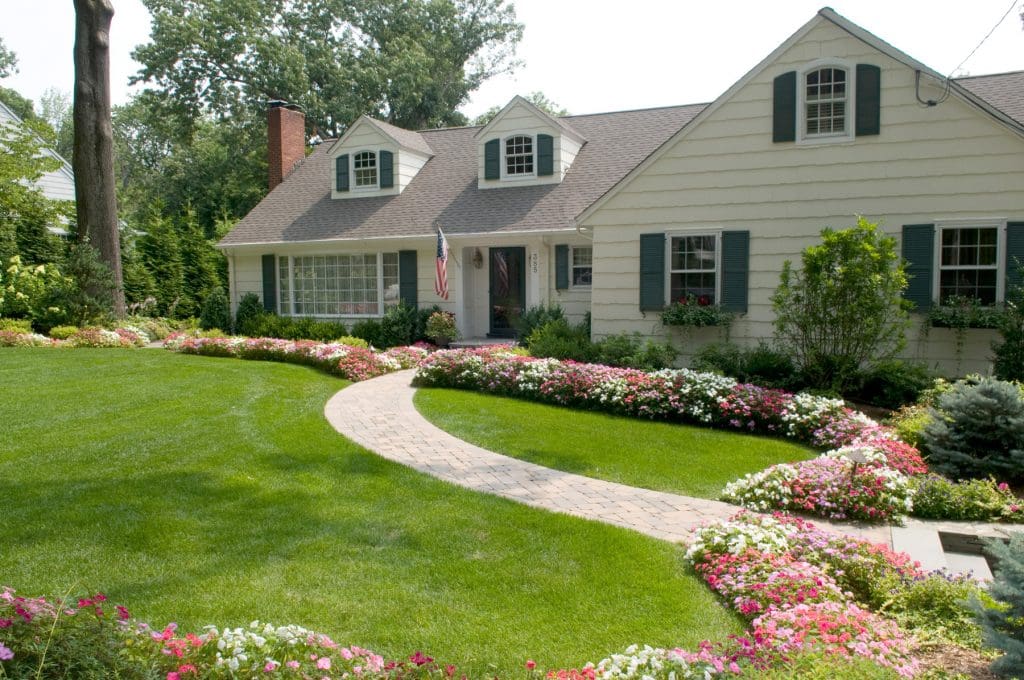
Summer Landscaping Tips
Often during the summer, brilliant blooms on plants will give way to leaves that don’t look nearly as impressive or beautiful. However, there are several plants that will keep their beautiful look throughout the summer including hydrangeas and rose of Sharon.
Fall Season Landscaping Tips
Floral colors dominate the spring and summer seasons, but they always give way to foliage colors in the fall. To help your yard make the transition from late summer to early fall, sumac shrubs are a great choice. They will carry you through from the last rose of Sharon bloom to the first color on your maple trees. Speaking of maple trees, they are a classic addition to any collection of fall foliage but their best color will only last through about mid-October. Oak trees last a bit longer and will help get you through to winter, but their color is a bit less impressive than maples.
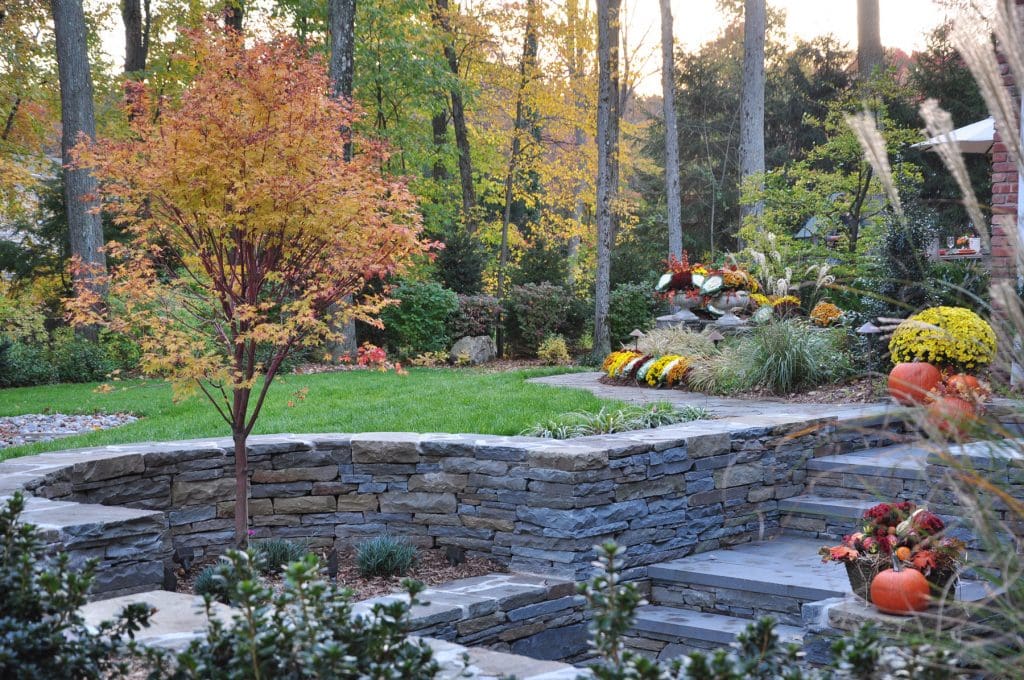
Winter Season Landscaping Tips
Finally, the most difficult season to plant inevitably arrives. The classic evergreen conifers are always a good choice to maintain some green throughout the winter but there are many other options to choose from. Red osier dogwood trees can provide a hint of color to a bleak winter landscape with their red bark. One of the most impressive shrubs for the winter season is Harry Lauder’s walking stick. This plant is also called a “contorted hazelnut” or “corkscrew filbert” and its unique branches will have neighbors and visitors talking and looking on in envy. Remember that during the winter season, shape and size become more important to landscape design as most of the color fades away. The lack of leaves on most of your plants will highlight the attention to detail (or lack thereof) you have paid to these considerations.
Month by Month Landscaping Tips
April Landscaping Tips
Now is the perfect time to add trees and shrubs to your landscape.
Follow these tips to ensure your trees and shrubs have optimal growing conditions:
- Get out your lawnmower as it’s time to start mowing
- Add a fresh layer of mulch to your garden. It’s better to do now before a lot of your plants start peeking through the ground.
- Start planting your vegetables. Great ones to begin now are lettuce, spinach, and peas
- Now is a great time to fertilize your lawn as well as roses, perennials, and shrubs.
- Once the forsythias are done blooming, it’s a great time to give them a trim. This will ensure that they are shapely.

May Landscaping Tips
- Watch for Pests: Do weekly spot-checks for Japanese beetles, scale, mites or aphids in your garden or shrubs.
- Plant Veggies: It’s safe to plant now. Feel free to sow seeds of sweet corn, melons, squash, beans, and cucumbers.
- Water, Water, Water: Now is the time to install new irrigation or check your old system to make sure that it’s working correctly.
- Plant and Beautify: Summer is the time to show your patriotism. Why not show it off in your garden. Mix and match your flowers, from flower type and color. Pick heat-loving flowers like ageratum, calibrachoa, celosia, geranium, lantana, pentas, petunia, verbena, zinnia.
It’s also time to dress your home with beautiful hanging baskets. There is a huge variety out there for any type of home and environment.
When are My Vegetables Ripe?
- Garlic: Takes 9 months to grow. It is planted in the fall and picked in later July. When the cloves are full and firm and the tops turn brown, dig it up. Once picked, place bulbs in a warm shady spot after for two weeks. Then store in a cool place for six months.
- Tomatoes: Can be planted anytime, but their prime is mid-July to September. The color will be mature whether it be red, orange, yellow. Pick them and keep them at room temperature. The fridge kills the flavor and texture of the tomato.
- Sweet Corn: The silk turns brown, not dry, and the kernels form fully. If there are dimpled kernels it is past peak.
- Onions: Harvest your onions early summer to fall. It is ripe when green tops flip over in midsummer, meaning the onion has reached its full size. Once you pull them from the ground, store them in a shady spot or garage for a few weeks. Cut off the tops, and place indoors until you are ready to use them.
 June Landscaping Tips
June Landscaping Tips
Check out our June landscaping tips to make sure your lawn is ready for the warm months ahead!
- Wait to remove the foliage on your daffodils, tulips and other spring-flowering bulbs until the plant has gone fully yellow and pulls easily out of the dirt. If there’s still some resistance, the bulbs are still absorbing sunlight and you should wait.
- Gather ideas now and map out your bulb garden so that in the fall, you can remember what is planted where and how you want to revise it for next year.
- As you walk through your property, clip off any dead flowers. By doing this, it encourages plants and flowers to keep on blooming and keeps them healthy.
- Conquer and divide. Now is a great time to divide your perennials. However, you might want to wait for a cool, moist day which makes it easier. Don’t forget to share it with friends.
- Prune spring-flowering shrubs when they are done flowering.
- Slugs tend to be a problem during this time of year due to heavy rains. Check your plants for signs of them and handpick them off your garden.
- Spring crops still need to be taken care of. The hot, dry weather can cause lettuce to bolt and become bitter. As soon as the spring vegetables are harvested, it’s time to plant a warm-season crop.
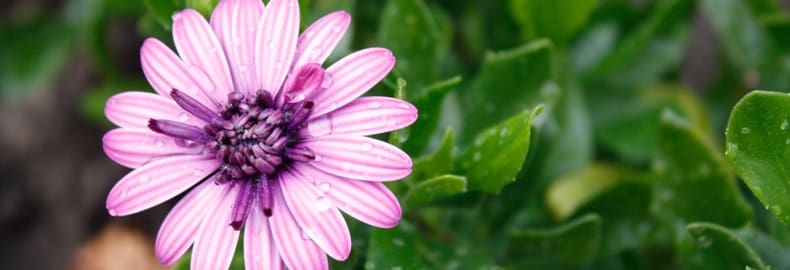
July Landscaping Tips
July can bring the scorching sun, high humidity, and a monsoon of rain, but caring for your plants should not be forgotten. Taking care of your flowers, shrubs, and even vegetables can be as simple as watering twice a day and cleaning them up.
- Give plants a mid-season feeding to keep the plants healthy. This will help ensure that your plants will thrive until autumn.
- Keep track of the rain. If no rain has occurred in two days then you should water your garden once in the morning and once in the late afternoon.
- If mulch seems dried out, be sure to replace it. Always water the mulch after placing it in your yard.
- Keep your lawn at about 3”, to protect from the sun and heat of summer.
- Check your vegetables and berries daily, for they should be harvested before birds eat them, or the sun dries them out.
- Make sure to prune dead flowers and leaves from your plants. This will keep them healthy and green.
- Plant vegetables like broccoli carrots, turnips, lettuce, and radishes now to enjoy a nice fall garden.
- Give some support to your larger plants. Stake and tie, top-heavy plants such as foxgloves and delphiniums.
- Remember; do not start a new lawn from seed now. The young grass will not survive the summer heat. If you have a new lawn you can add another application of seed, six months later to increase the turf density.
- To keep your lawn looking picture-perfect feed lawn and outdoor potted plants with slow-release nitrogen fertilizer.
 August Landscaping Tips
August Landscaping Tips
As summer begins to wind down, be sure to take full advantage of your landscape, and prepare it for winter as well. Follow these tips to keep your landscape looking great:
- Decorate your home with your garden. Pick fresh flowers indoors. This will also encourage more blooms on most perennials.
- Remember to clean up after your plants. Continue to weed flower beds. Remove faded blooms.
- Keep the soil of your garden moist by watering twice a day, but do not drown your plants. You want to lightly nurture them with a sprinkler hose, not a hard pressure hose.
- For your herb garden, gather herbs for drying as they mature. Pinch the stems of basil regularly to prevent flowering. Harvest about once a week.
- Take care of your lawn after a hot summer. Make sure to feed lawns with a slow-acting fertilizer and cut your lawn and trim the edges regularly. Watch out for yellow patches or poor growth. Increase watering if you notice any of these signs.
- Remember to order you peony roots because September is peony planting time. You should have peonies in the ground about a month before the average first frost date.
- Be sure to watch for insect, slug, and snail, or disease damage throughout the garden, and take the necessary steps to control the problem.
September Landscaping Tips
- Start your clean-up for the fall. Cut back dead flowers, petals, and leaves that fall in your flowerbeds.
- Dig up and store your tender bulbs like caladiums, dahlias, cannas, and tuberous begonias.
- Purchase spring bulbs and plant spring-flowering bulbs.
- Mow your lawn regularly and keep grass height at 2 ½”.
- Plant your late-season annuals like ornamental kale and cabbage.
- Fertilize lawn with organic fertilizer to stimulate winter root development.
- Dig outdoor herbs and repot to bring inside.
- If it becomes an Indian Summer, keep watering your garden and lawn about twice a week.
- Since the soil is moist, be sure to plant container-grown shrubs, trees, and fruit bushes.
 October Landscaping Tips
October Landscaping Tips
- Use your garden debris and leaves to start a new compost pile. You should turn your old compost pile and add it to the soil that needs nourishing.
- Plant cool-season annuals like mums and asters. If the evenings get too cold, cover your plants to avoid frost and lengthen their blooming.
- When cleaning your garden, dry and save seeds. You can plant them again.
- If you are planting vegetables, make sure to check frost dates, so you can protect your veggies.
- Avoid planting too near a tree, which will steal nutrients and shade the garden. A garden too close to the house will help to discourage wild animals from nibbling away your potential harvest.
- Make sure to have enough sun exposure to your plants. Vegetables need at least 6 hours of full sun every day.
- Fall vegetables include asparagus, beets, leeks, broccoli, lettuce, Brussels sprouts, onions, cabbage, carrots, parsnip, cauliflower, peppers (short-season varieties), celery, peas, cucumber, radishes, green beans, spinach, gourds, herbs, tomatoes (short-season varieties), turnips, and kale.
- Fall flowers include alyssum, begonia, calendula, chrysanthemum, dianthus, dusty miller, pansy, petunia, and geranium.
Decorate for Halloween with a pumpkin planter. Use various sizes and colored pumpkins and pile them in a planter on your front steps. - Try a fun activity like decorating your larger pumpkins. Trace a maple leaf onto the pumpkin, then use a linoleum cutter or potter’s ribbon tool to scrape out the design of the leaf. Be careful not to cut completely through to keep your design fresh.
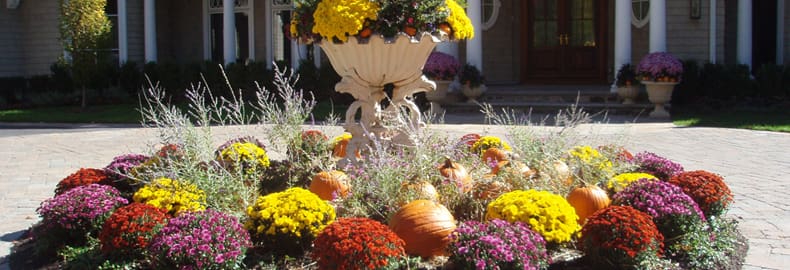
November Landscaping Tips
- Clean up excess leaves and create piles in order to compost. Cover your compost so that rain does not flood and leach the nutrients.
- Add organic matter to your flower beds to create healthy soil.
- If you want a live Christmas tree for December you can plant your own! Dig the hole now, before the ground freezes. Remember to keep the soil covered, so that it too does not freeze and the tree can fit into the hole.
- The autumn months are a good time for indoor planting. Make sure the indoor plants are receiving enough water, humidity and air circulation.
- Store breakable items like terra-cotta pots before it freezes and cracks. Terra-cotta can be saved in an unheated shed or garage.
- Decorate outside or inside with gourd candle holders. Simply cut off the tops and hollow out the center. Place orange, yellow, and brown candles inside.
- Warm your home with a harvest garland. Make a garland from died ears of fall cornhusks. Mix colors like ruby red, yellow, and purple by twisting small eye screws into the wide end of each ear. Bend the husks into loops and seal the pointy ends together with hot glue. Finally, string the ears onto twine, alternating with corn husks as you go. Hang above your door or along your porch.
- Create a leafy monogram for your home. Collect bright leaves from your yard and purchase your family name’s first initial from a local crafts store. Use a hot glue gun to glue the dried leaves to the letter.
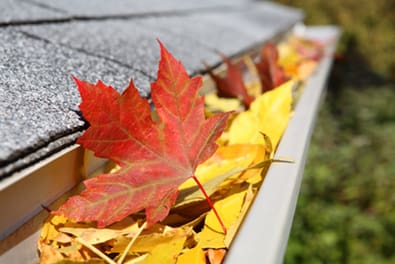
December Landscaping Tips
- After Christmas, move your tree outside and let the birds and wildlife use it for a while. Make sure to anchor the tree in a bucket of damp sand and decorate it using strings of popcorn and cranberries and other fruits. You can also use pine cones covered with peanut butter then dipped in birdseed.
- Be sure to stock up on kitty litter, sand and plant fertilizer. They all make good substitutes for salt when used to melt ice off walks and driveways.
- Make sure to bring in any of your clay, cast stone or ceramic pots that haven’t been brought in already. Make sure to rid them of the soil which will freeze, expand, and, most likely, crack the pot. Containers remaining outdoors should also be covered to prevent the accumulation of snow and ice.
- Drain the fuel tank of your lawnmower and other power tools before putting the machine away for the winter.
- Remove heavy snow from shrubs to prevent the branches from breaking.
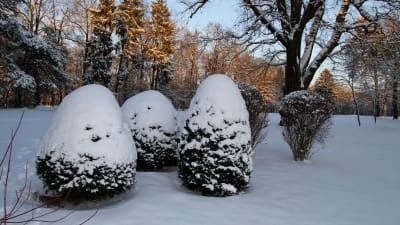
Now that you know how to maintain a yard both in general and throughout all four seasons, you may find it a little easier to plan out your Bergen County front or back yard and keep it looking its best all year long. If you’re still feeling a bit overwhelmed, the experts at Borst Landscape and Design can help. We’ve been helping northern NJ homeowners maintain four-season interest in their yards for over 25 years. Contact Borst online or give us a call at 201-785-9400 today!

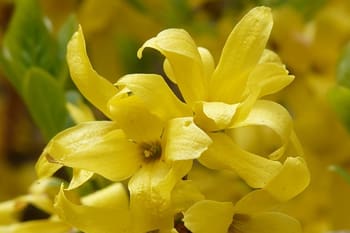
 June Landscaping Tips
June Landscaping Tips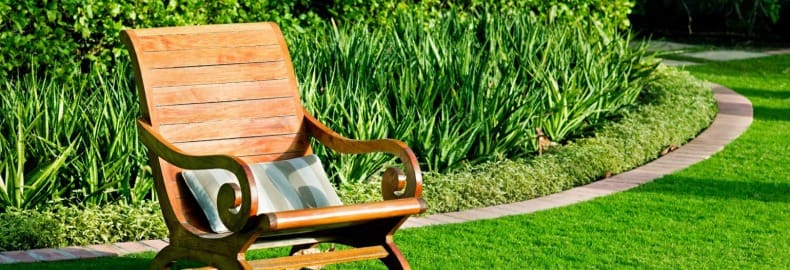 August Landscaping Tips
August Landscaping Tips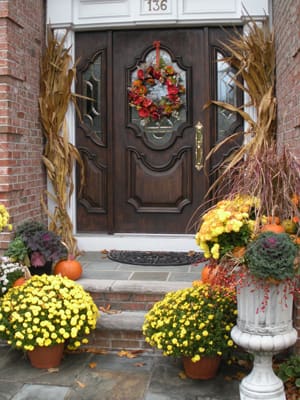 October Landscaping Tips
October Landscaping Tips